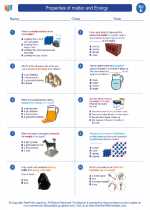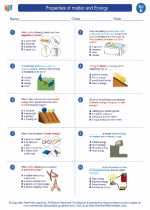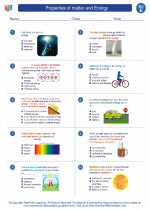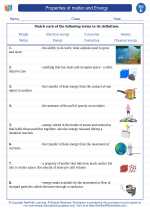Properties of matter and Energy -> generators
Parts of a Generator
Generators consist of several key parts, including:- Engine: This provides the mechanical energy to drive the generator.
- Alternator: The alternator contains the coil of wire and the magnetic field necessary for electromagnetic induction.
- Fuel system: This supplies the engine with the necessary fuel to operate.
- Voltage regulator: This component maintains a steady output of electrical power.
- Cooling and exhaust systems: These prevent the generator from overheating and remove exhaust gases.
How Generators Work
- The engine, powered by fuel, provides the mechanical energy to the alternator.
- As the alternator's coil of wire rotates within the magnetic field, an electrical current is induced in the wire.
- This current is then transferred through the generator's wiring and outputted as electrical power.
- The voltage regulator ensures a constant voltage output, and the cooling and exhaust systems prevent overheating and remove exhaust gases.
Types of Generators
There are several types of generators, including:- Portable generators: These are small, mobile generators often used for camping or as backup power sources for homes.
- Standby generators: These are larger, stationary generators often used in commercial or industrial settings as backup power sources.
- Wind turbines: These generators harness the kinetic energy of the wind to produce electrical power.
- Solar generators: These generators convert sunlight into electrical power through photovoltaic cells.
Applications of Generators
Generators have a wide range of applications, including:- Providing backup power during outages
- Powering construction sites or outdoor events
- Supplying electricity in remote areas without access to the power grid
- Generating electricity from renewable sources such as wind and solar energy
Study Guide
To study generators effectively, consider the following key points:- Understand the principle of electromagnetic induction and how it applies to generator operation.
- Learn about the different parts of a generator and their functions.
- Explore the various types of generators and their specific applications.
- Consider the environmental and economic benefits of using generators powered by renewable energy sources.
[Generators] Related Worksheets and Study Guides:
.◂Science Worksheets and Study Guides Fifth Grade. Properties of matter and Energy
Study Guide Properties of matter and Energy
Properties of matter and Energy  Worksheet/Answer key
Worksheet/Answer key Properties of matter and Energy
Properties of matter and Energy  Worksheet/Answer key
Worksheet/Answer key Properties of matter and Energy
Properties of matter and Energy  Worksheet/Answer key
Worksheet/Answer key Properties of matter and Energy
Properties of matter and Energy  Vocabulary/Answer key
Vocabulary/Answer key Properties of matter and Energy
Properties of matter and Energy  Vocabulary/Answer key
Vocabulary/Answer key Properties of matter and Energy
Properties of matter and Energy 

 Worksheet/Answer key
Worksheet/Answer key
 Worksheet/Answer key
Worksheet/Answer key
 Worksheet/Answer key
Worksheet/Answer key
 Vocabulary/Answer key
Vocabulary/Answer key
 Vocabulary/Answer key
Vocabulary/Answer key

The resources above cover the following skills:
PHYSICAL SCIENCE (NGSS)
Matter and Its Interactions
Students who demonstrate understanding can:
Develop a model to describe that matter is made of particles too small to be seen.